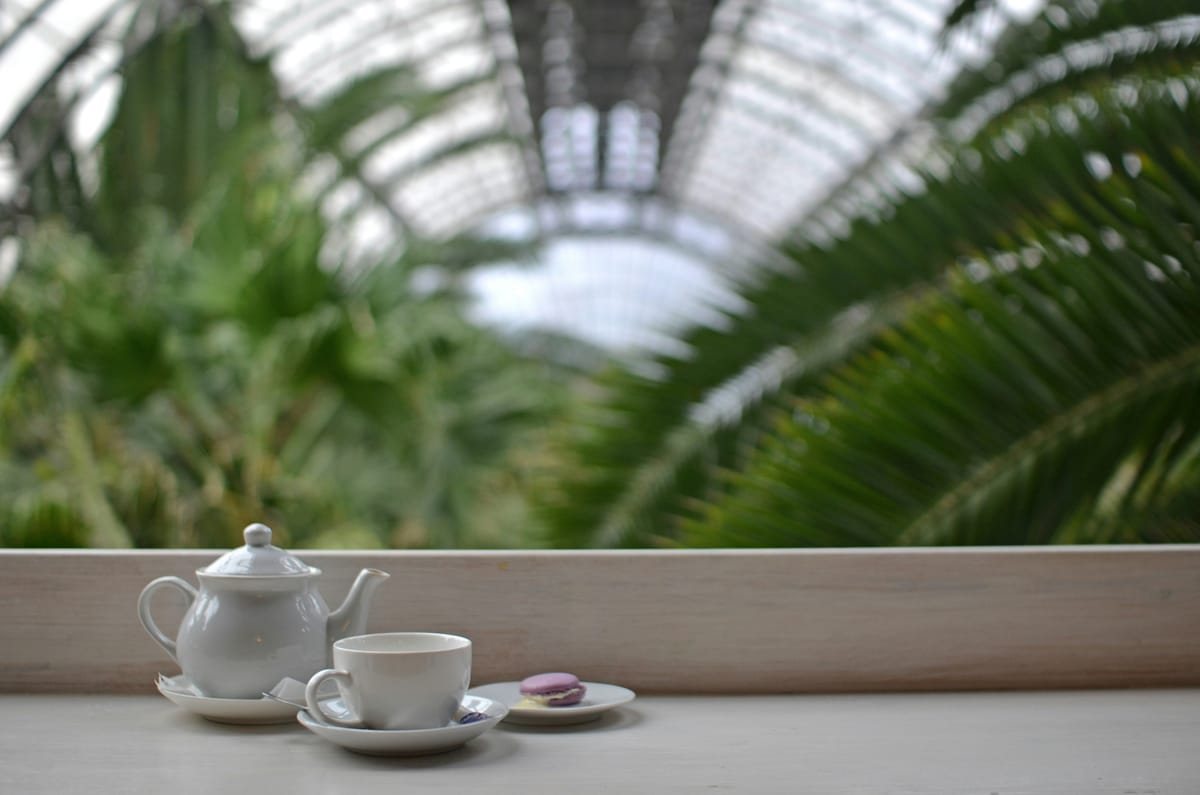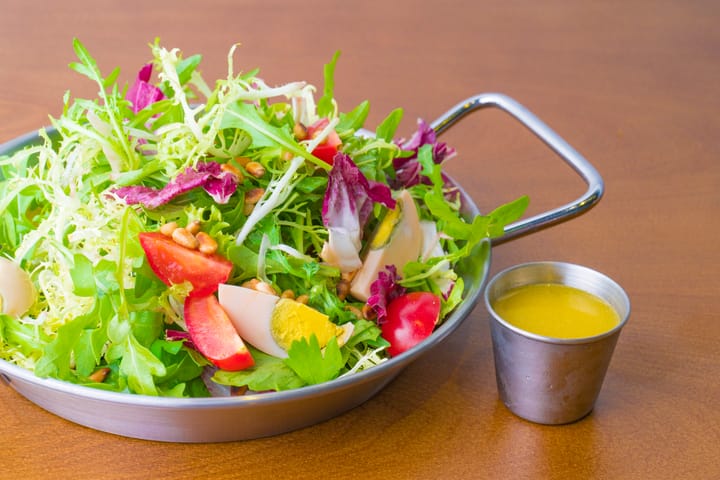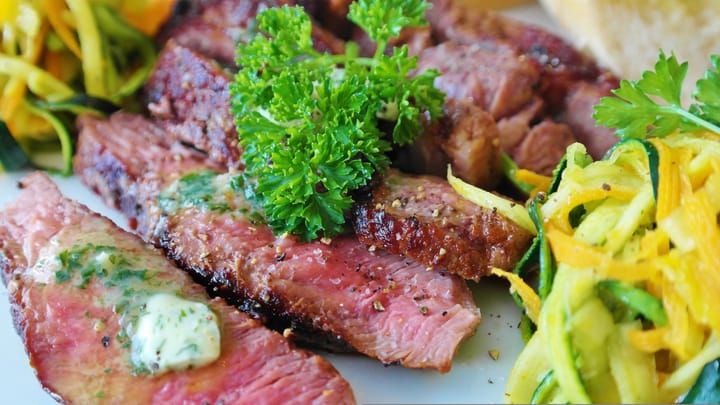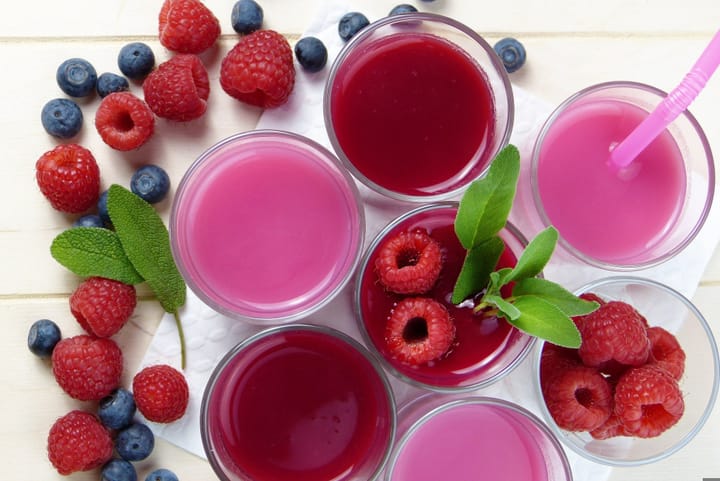A Rich Life, Indian Masala Chai

Singapore is a multicultural country with 74% Chinese, 13% Malay, 9% Indian, and other minority groups including Eurasians, Filipinos, Sri Lankans, Arabs, and immigrants from all over the world. Living here for a while, you naturally make friends from different ethnicities. Their presence enriches my life and makes it fuller.
My friend Mrs. Lori is originally from Tamil Nadu in southern India. She has long studied Indian spices and cooking—what is called “Masala.” Masala is a Hindi word meaning “spice mixture” or “seasoning.” In Indian cuisine, Masala usually refers to a blend of various spices, which can be either dry powders or wet pastes.
“Masala is the soul of Indian dishes. It can be used on everything—from curries to snacks, even drinks. It marinates meat, flavors vegetables, makes sauces, and seasons soups and rice,” Lori explained, her long curled lashes fluttering as her bright eyes fixed on me. I had a slight cough these days and wasn’t very talkative, so I sat sideways in my chair, smiled faintly, and flipped through a new book by Arata Issei called What Should I Eat This Year?
“There are so many types of Masala. Take Garam Masala, for example—it’s very common. People usually mix cardamom, cinnamon, cloves, pepper, and cumin. Or Chaat Masala, which is the tangy dip spice with mango powder, cumin, and black salt. And Curry Masala, which you often eat—turmeric, chili powder, mustard seeds mixed for curries,” she said, spreading her hands and shaking her head like a seasoned expert. One great thing about having tea with Lori is that I don’t have to talk much. A smile is enough to encourage her, and then she gets more animated.
“Why are you sitting like that? It’s dangerous,” she asked on her sunlit open balcony, where the chamomile and sage plants around her looked a bit wilted in the heat.
“I’m sunbathing my back. It’s Chinese wisdom—to boost yang and dispel dampness. My cough is bad; I canceled two phone meetings and a class. I have to get better quickly,” I said without looking up.
“Dampness, huh? So your cough is from cold and damp in your body. Dear, you need a cup of Masala Chai. Trust me—the unique flavors and warmth of the spices will pull you out of the mud and heal you fast,” she said with energy, as if there was nothing Masala couldn’t fix. If something couldn’t be fixed, it must be because the recipe missed an ingredient.
“Masala Chai? Indian spiced tea? Not the Indian pulled tea, Teh Tarik? I’d rather drink bottled water,” I thought of the sweet, milky, Assam tea from the tea-pulling performances, and I wasn’t convinced. Though Teh Tarik is rich and smooth, my cough needed something lighter.
“Not at all. Teh Tarik is a Malaysian milk tea—‘pulled tea,’ as the name says. What I’ll make is Masala Chai, Indian spiced tea! Come help me in the kitchen if you want to try,” she said, already assuming I was curious, then turned toward the kitchen.
In Lori’s kitchen, there was a fascinating round box called a Masala Daba, used by Indians to hold various spices. She took out three cardamom pods, six black peppercorns, three cloves, and a piece of cinnamon stick. She heated a pan on the induction stove and quickly dry-roasted the spices until fragrant, then poured them into a wooden mortar, added a peeled piece of old ginger, and crushed everything together. The spicy aroma filled the air. To a Chinese palate, if she suddenly started cooking Dongpo pork right then, it would feel just as natural.
Next, she poured the crushed spices into a small pot. I added some water. She brought it to a boil over medium heat, added milk, then a pinch of Ceylon black tea, and boiled again before adding a little white sugar. I’d seen a similar process for making brick tea at a Mongolian friend’s house. Finally, Lori strained the tea into a small ceramic cup. “Try it—it’ll cure you,” she said with a smile, handing me the cup while washing the mortar, pot, and strainer with practiced speed. I silently noted this efficient habit of hers as something I should learn.
Holding the warm, fragrant cup of Indian spiced tea, I felt sure it would dispel cold and dampness.
“Don’t just stare—drink it! You know, in some remote parts of India, there are stalls selling Masala Chai in Kulhad cups. These cups are made from unglazed clay and meant for one-time use. After drinking, people just smash the cup. It’s refreshing and energizing to drink the tea, and then the cup returns to the earth,” she began another expert explanation.
“That’s interesting. In China, we also say dust returns to dust, earth returns to earth,” I replied.
Back on her balcony, reading again with the warm cup in my hand, Lori typed away furiously on her laptop as if inspired. Looking out toward the sea, sunlight fractured on the waves, each shard shining like silver sparks. If we don’t resist the freshness life offers, we can watch flowers bloom and leaves fall with interest, observe the rising and setting sun, and the tiny yet wonderful moments in life. Then compassion grows, every second gains depth, and observing and experiencing life nourishes the soul. That’s how we grow and live a rich life.
丰盛的人生,印度香料茶
新加坡是一个多元民族的国家,有占比74%的华族,占比13%的马来族,占比9%的印度族,和除了三大族群以外的其他少数民族群体,包括欧亚裔、菲律宾人、斯里兰卡人、阿拉伯人和其他来自世界各地的移民。这些族群进一步丰富了新加坡的文化多样性。住的时间久了,同学、邻居里也会自然而然的多了一些其他种族的朋友,她们的存在也打开了我的生活,让我的人生变得丰盛。
我的朋友Lori太太,祖籍来自印度南部的泰米尔纳德邦,长期研究印度南北方的香料和烹饪料理,也就是"Masala"。这是一个印地语词,是“香料混合物”或“调味料”的意思。在印度烹饪中,Masala 通常是由多种香料混合而成的调料,可以是干粉状,也可以是湿糊状。
“Masala 是印度菜肴的灵魂,它可以用在各种食物上,从咖喱到小吃,甚至饮品。能用来腌制肉类、调味蔬菜、制作酱料,甚至调味汤品和米饭。”每次提到她研究的专业,她那卷翘的长睫毛都会忽闪着黑亮的大眼睛,梗着脖子看着我。我因为这几天有点咳嗽,不爱说话。就反着跨坐在椅子上露出脸歪头一笑,手里举着一本新井一二三的新书《这一年,吃些什么好?》有一搭没一搭的翻看。
“Masala 的种类太多了。你比如Garam Masala,这个很常见,一般人们会混合小豆蔻、肉桂、丁香、胡椒和孜然。再比如Chaat Masala,我们常用蘸小吃的酸辣料,会用到芒果粉、孜然、黑盐。还有Curry Masala,这个你经常能吃到的,经常做咖喱时会混合姜黄、辣椒粉、芥末籽。”她把手一摊,晃着脑袋如数家珍。和Lori在一起喝下午茶的好处就是,比较不浪费我的气血。我笑一下就能鼓励她说很久,还越说越起劲。
“你干嘛这样坐在椅子上,危险。”她问我。在她那全开放的阳台上,阳光倾泻下来,身边栽种的洋甘菊和鼠尾草也被晒的有点没精神。
“晒背。中国人的智慧。补阳气、祛湿气。我咳嗽的这么严重,取消了给学生上课,还取消了两个电话会。我得赶紧好起来。”我百无聊赖的继续看书,没有抬头看她。
“去掉湿气?所以你现在的状态是身体潮湿寒冷导致了咳嗽不止。亲爱的,你需要一杯Masala Chai,你信我的,香料的独特的味道和温暖的属性能把你的身体脱离泥潭,快速痊愈。”她来了精神,好像这个世界上没有什么是Masala组合不了的,如果有,那一定是因为材料种类放少了。
“Masala Chai?印度香料茶?不是印度拉茶吧(Teh Tarik)?我喝瓶装水就好。”回想起看过的拉茶表演和阿萨姆茶加上炼乳的甜腻感,我心里是一万个拒绝的。其实印度拉茶味道是很香浓的,拉茶的手艺让气泡丰富,口感顺滑。但是眼下咳嗽难受,清爽一些的饮料可能更适合我。
“当然不是,印度拉茶吧(Teh Tarik)是马来西亚的传统奶茶饮品,看字面意思也知道啊,‘拉的茶’。我要给你做的是Masala Chai,印度香料茶!要喝就来厨房打下手。”她已经默认我一定会好奇了,说完转身就去了厨房。
Lori太太的厨房里有个很有趣的圆盒子,就是传说中印度人专门装各种香料的容器,叫做Masala Daba。取出绿豆蔻3颗,黑胡椒6粒,丁香3颗,还有一块桂皮。用电磁炉加热平底锅,快速炒干炒香这几样调料,取出来后统统倒进一个木质的研钵中,切一块老姜去皮一起丢进去捣碎。空气里开始飘着辛辣的香味,对一个中国胃来说,这时候如果她突然开始做东坡肘子,我感觉也是顺理成章的。
之后她把香料倒进一个很小的锅里,我帮忙添了一点水。中火煮到滚,沸腾后加入牛奶,又放了一小搓锡兰红茶,再次煮沸后放了一点点白砂糖。这个步骤我在一个蒙古朋友家看过,她煮砖茶和这个步骤有点像。最后,Lori太太把茶汤过滤出来,盛在一个小陶杯里。“试试吧,喝完就痊愈了。”她一边笑着把陶杯递给我,一边手里忙着清洗研钵,小锅,过滤网和岛台。这份麻利劲儿我在心里悄悄记下来了,这也是我要学习的好习惯。
我捧着辛香四溢的一小杯印度香料茶,感觉它一定是可以祛湿寒的。
“别愣神啊,喝掉,喝掉就好了。哎,你知不知道,在我们印度的一些偏远的地方,有一些卖Masala Chai的摊位,他们提供一种叫做Kulhad的杯子。这种杯子是一次性使用的,就是用没有未上釉的陶土制成,用完后很容易自然降解。很多人喝完一杯Masala Chai就摔掉杯子。一来喝完提神醒脑,一杯下肚精神饱满。二来让杯子也回到了大地。”她又开启了专业讲解。
“有趣,在我们中国,也有尘归尘土归土的说法。”我说。
再回到她的阳台看书,我手里还握着那只温热的杯子。她在笔记本电脑上奋笔疾书,好像找到了新的灵感。我看着不远处的海面上,阳光被波浪剪碎,每一面都闪着灵动的银色光芒。如果我们不拒绝这世界铺面而来的新鲜,就能饶有兴趣的看花儿怎么开放,叶子如何凋零,世间的日升月落和人们那些细碎精彩的生活。然后生出同情之心,每一秒钟有它的厚度,观察和体会成为对生命的滋养,我们就会成长,就会拥有丰盛的人生啊。



